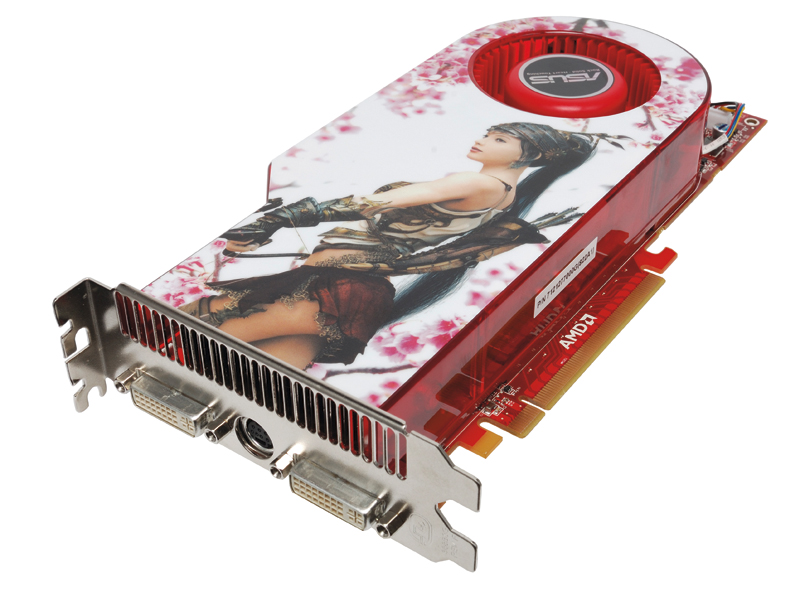TechRadar Verdict
If it's performance you crave, saving your pennies and getting an X2 or better would be wise
Pros
- +
Stable and quick
Cons
- -
Expensive compared to stock card
- -
Not that much faster
- -
No extra overclocking headroom
Why you can trust TechRadar
Can't beat them? Then undercut them. That's the message from AMD about graphics cards. It's the same logic that helped the firm establish its CPU business, and it could work just as well in the world of video.
Current pick of the crop is AMD's Radeon HD4850 (PCF217, 87%), currently cruising at an altitude of £115 and performing in the same airspace as a GeForce 8800GT. Is it worth trading up the extra £70 to an HD4870? Or should you exercise prudence and caution in these times of financial uncertainty?
Similiar specs
It may seem pointless. Playing 'Spec Sheet Spot the Difference' isn't fun: there are no quads turned off, both have a full complement of 800 stream processors and 512MB of memory sitting on a 256-bit crossbar bus. The same number of ROPs (16) and TMUs (40) reside on the silicon surface of both chips.
The only thing your money buys, in fact, is speed. The core of an HD4870 runs at 750MHz, compared to a meagre 625MHz for its slower counterpart. Of course, AMD is too clever to let you simply buy an HD4850 and juice it up by 125MHz.
For one thing, you won't be able to give it enough power: the bigger, more expensive card has two 6-pin connectors, not one. Despite the extra cooling, though, both cards run very hot – in excess of 90˚C if they're left testing for a few hours.
Quadruple speed
Sign up for breaking news, reviews, opinion, top tech deals, and more.
The really big difference, though, is that the HD4870 comes equipped with the very latest memory technology, GDDR5. A larger buffer and twice as many connects means that where GDDRs one through four effectively double the clockspeed of chips, GDDR5 quadruples it.
So the 900MHz GDDR5 on an HD3870 has the effective bandwidth of 3600MHz RAM. That's an awful lot of bandwidth, and to merrily mix a metaphor, without it the HD4850 is trying to run the 100m through the eye of a needle.
Against an HD4850, the faster card stacks up reasonably well. Percentages of around 10-20% faster at 20-inch native resolution aren't to be taken lightly. It's not a deal breaker, though, since there aren't many games which magically become playable at a higher resolution/IQ settings with the more expensive chip. At less than 30fps, 20% isn't going to open a whole new world of 'cinematic gaming'.
Applying anti-aliasing – despite much being made of the new ROPs which make AA 'free' – brings the two closer together still. So, it's a fast card, with some extra headroom to get your games looking better, but not quite fast enough to outweigh the HD4850's ludicrous cheapness.
Overclocked talents
What of Asus' overclocked version, the EAH4870 TOP, then? Although it appears to share the same heatsink, this monster has been ramped up to a whopping 850MHz on the core, and the equivalent of 3700MHz for the memory. And it still costs less than a GeForce GTX260.
There are two bits of bad news for Asus, though. The first is that we easily managed to push Sapphire's standard HD4870 to 790/4400MHz without any issues whatsoever; in fact, we only used the 'Auto Tune' button in the drivers. The second is that neither our home-brew affair nor the factory charged Asus one had any significant improvements over a standard card – indeed both were occasionally slower.
Beating NVIDIA?
The conclusion which we're drawn to is that the 256-bit bus is just too narrow for the super-fast memory, and there's not a lot of headroom for the RV770 architecture to go faster. But it can go bigger: a forthcoming X2 version – with two GPUs on one card – is rumoured to scale very well and could likely take the performance crown from NVIDIA at last.
There's just one final challenge left for the HD4870 – and that's NVIDIA's mid-range GTX 260. Shopping around, you can easily find them for about a tenner more than the Radeon and in many ways it's a more sensible upgrade over the HD4850.
For a start, it scales better with anti-aliasing than the Radeon, and although the two tussle and turn over which has the highest benchmark, where the NVIDIA card wins it wins by a more significant margin.
The only thing is that the GTX 260 is roughly the size of a small horse, and unless you own an Antec P190 class stable, you'll struggle to fit it in your case.
All this is a roundabout way of saying that unless you own a 24-inch (or larger) monitor, save your money and buy an HD4850. Or wait a bit longer and get a GeForce 9800GTX+, or HD4870X2; both will offer more performance and value for money.
